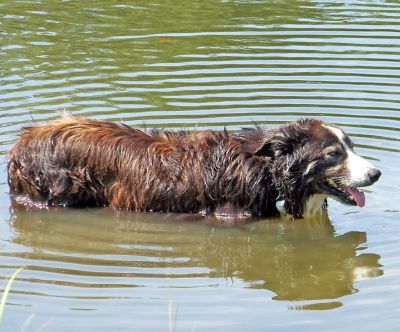
2018 opened with yet more confirmed cases of Alabama Rot in UK dogs. With a fatality rate of 80%, the kidney disease, characterised by ulcer-like skin sores, has now affected over 100 dogs countrywide since the disease first appeared in the UK in Hampshire in 2012.
Suggested link between Alabama Rot and a micro-organism
New research, carried out at a specialist fish health laboratory, may have found a link between Alabama Rot and a micro-organism known to infect fish. Dr Fiona MacDonald, founder of Hampshire’s specialist Fish Treatment Ltd, has suggested a link between a bacterial infection of fish and the tissue-destroying disease in dogs.
Veterinary laboratories and practitioners refer to Alabama Rot as ‘Cutaneous and Renal Glomerular Vasculopathy’ or CRGV, acknowledging its twin characteristics of distressing, visible skin sores and life-threatening (renal) kidney failure, both caused by destruction of the vascular (blood supply) system.
Dr MacDonald’s linking of CRGV in dogs with the haemorrhagic condition known as ‘red sore’ disease in fish comes from the discovery that the bacteria, Aeromonas hydrophila, which causes red sore disease, has been found in the kidneys of CRGV affected dogs.
What makes Aeromonas so toxic to some humans and animals?
Aeromonas hydrophila is visualised microscopically as a Gram-negative staining rod-shaped bacterium. Like other members of the Aeromonas genus, A.hydrophila is common, widespread and able to survive and grow with or without oxygen in fresh or salt water, at temperatures down to 4 degrees Celsius and resistant to many common antibiotics.
Exactly what makes Aeromonas so toxic to some humans and animals isn’t fully clear, but it’s thought that it might exploit an existing weakness or susceptibility in its host, possibly entering via the digestive system with contaminated food or water.
The microbe invades vital tissues and organs, such as the kidneys, via the bloodstream. Secreting a range of tissue-destroying toxins including the cytolytic (meaning cell-bursting) ‘aerolysin’, the microbe causes the open sores and renal failure that characterise CRGV.
Only hygiene, care and vigilance offers protection from Alabama Rot
The proposed fish connection needs further investigation and laboratory research is continuing. In the meantime, and in the absence of a clear cause, preventative or cure, only hygiene, care and vigilance offers protection from Alabama Rot.
With most cases reported in the wetter months from October to March, some vets suspect that CRGV begins with infected mud and water. Washing mud from your dog’s legs and body may be a sensible precaution, and may also help reduce the risk of other water-borne diseases.
Inspecting your dog for sores that may indicate Alabama Rot will also forewarn of other dermatological infections, and ulcerating diseases including Leishmaniasis. Reporting changes in your dog’s behaviour such as tiredness, reduced appetite and increased or reduced urination will help your vet provide early diagnostic testing and potentially life-saving treatment for CRGV and many other infections and dog diseases.
To find out more about our large range of veterinary diagnostic test kits visit our website: www.vetlabsupplies.co.uk or Telephone: 01798 874567
